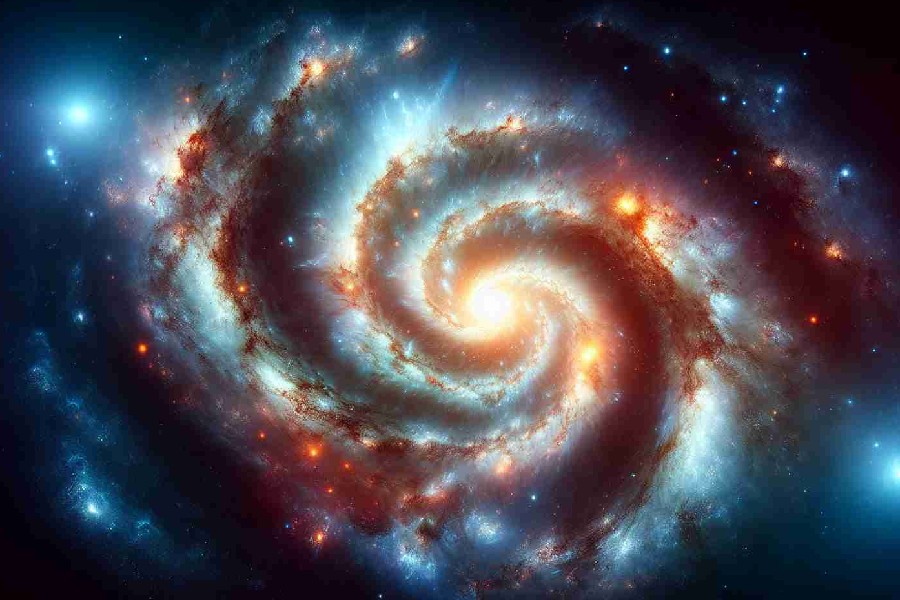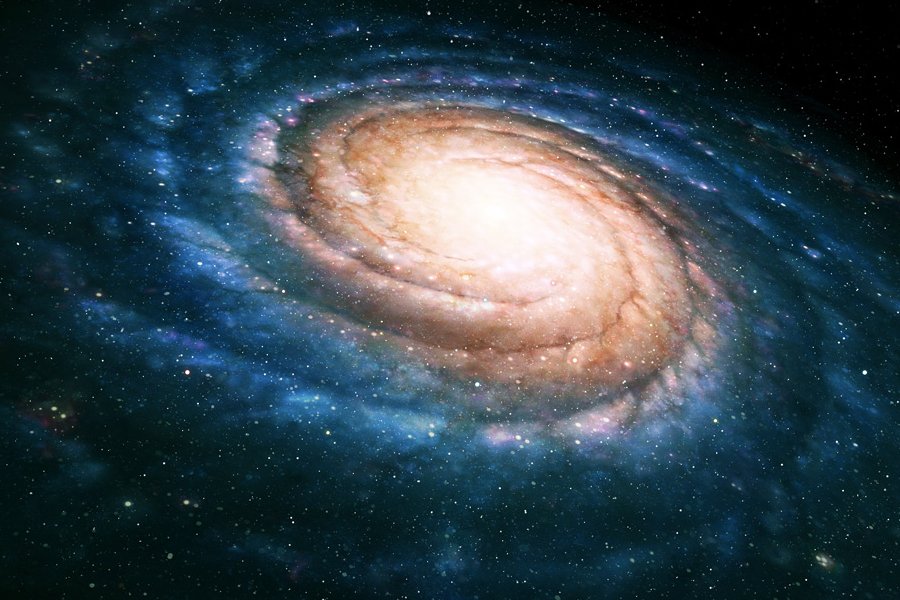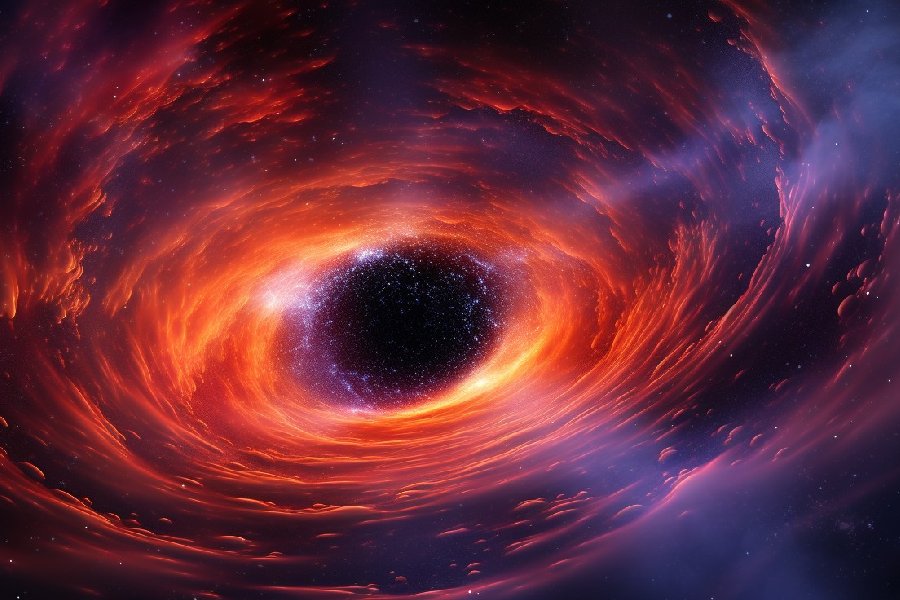Among the billions of galaxies observed shining across the cosmos, a rare subset glows brighter than all others, presenting as active galaxies. What are active galaxies, and what is their role?
In this article, we will survey the anatomy and varieties of active galactic cores displaying intensely dynamic behavior. We aim to explain possible links between spiral galaxies today, which spin calmly, versus ancient galaxies from the early universe that burned far more actively and chaotically.
Along the journey, we probe essential questions around the origins and impact of galaxy types exhibiting such stark differences in observed activity. Just what precisely constitutes an active galaxy, how do these high-energy phenomena emerge, and what role might they play in stellar life cycles across eons? Let’s dive in!
What Are Active Galaxies?
So, what are active galaxies? Active galaxies are a class of galaxies that exhibit unusually high levels of energy emission compared to typical galaxies. They are energetic and turbulent galaxies forming many stars and emit prodigious amounts of energy from their cores as matter swirls inward at breakneck speeds.
Our Milky Way doesn’t show much action currently. It’s pretty laid-back, slowly recycling small gas clouds towards its center. But if we look closer at the earliest galaxies found closer to the edges of the universe, it’s a whole different story. They’re super active!
This is mainly because of a supermassive black hole at the center of the galaxy, surrounded by a swirling disk of falling matter. The crazy gravitational forces involved create a massive energy release in different wavelengths like radio, optical, and X-rays.

What are the three main types of active galaxies
There are different types of active galaxies, and the three main ones are Seyfert galaxies, quasars, and blazars, each characterized by specific observational features.
These galaxies often display strong and variable emissions, indicating dynamic processes occurring near the central black hole. The study of active galaxies contributes significantly to our understanding of the role of supermassive black holes in galactic evolution and the broader cosmos.
Characteristics of Active Galaxies
Active galaxies reveal their dynamic nature through distinct observable features, especially intensely luminous core regions that can outshine their entire stellar populations. Optical and infrared spectra showcase exceptionally bright central accretion zones fueled by matter spiraling rapidly into supermassive black holes.
Visible signatures also include lengthy plasma jets ejected thousands of lightyears indicating extremely energetic outputs. In radio, X-ray and other bands, dramatic flares expose production levels vastly dwarfing quiescent galaxies over time.
Ultimately, multiwavelength patterns expose what vigorous mechanisms – accretion processes, collisions, magnetic dynamos – may drive such hyperactivity compared to more dormant galaxies. Their properties offer ponderings about early universe galactic evolution.
Components of an Active Galaxy
Black holes
At the hearts of active galaxies lie supermassive black holes up to billions of solar masses strong. Their immense gravitational acceleration powers energetic behavior by viscously dragging surrounding material into swirling accretion disks as it approaches the event horizon.
Magnetic dynamos and immense friction heat trapped matter to billions of degrees, emitting across spectra. Relentless angular momentum condensation centers around these massive singularities in the galaxy nuclei.
Density spikes nearer the core, creating torus morphologies sharply distinct from spiral arms. Understanding the gravitational forces concentrated by central black holes remains pivotal to active galaxies’ startling luminosities.
Galactic nuclei
Containing the actively accreting black hole, galactic nuclei represent the central concentration zone where gas and stars collect in immense quantities compared to outer regions. It is among the densest and most gravitationally intense areas observable.
The nuclei may take on elliptical, boxy, or bulge shapes rather than majestic disks amid the chaos. Collision remnants likely also clump around nuclei.
This interplay creates ideal conditions for hyperactive phases when accretion peaks – pouring light across galaxies. Nuclei essentially form the powerplant where consumed matter fuels immense energy.
Central region
Stretching out thousands of lightyears around galactic cores, strikingly dynamic activity erupts in the central regions containing the nuclei and black hole acceleration vortex. Here, younger stars still form and heavy elements brew in nebulae clouds near the spatially compact yet massively overloaded nuclei.
The concentration of matter, energy, and light distinguish this environment carved by gravity’s chokehold. Magnetic flux ropes channel material inwards while launching some superheated plasma along relativistic jets that escape perpendicular to the disk. The central region essentially serves as the emission engine – bright across bands.
Accretion disk
Funneling around the black hole, glowing accretion disks up to thousands of AU form as matter orbits tighter with immense friction and tidal heating ionizing material. The turbulence inside this energetic structure causes flares that we can detect. Models also suggest that the unevenness within it creates changes in brightness.
The hyperactive disk essentially feeds plasma to fuel the spiraling black hole monster. While doing that, it creates emission signatures that scientists use to study its surroundings and the way it distorts visible light in the swirling spacetime.
The amount of matter falling into the black hole is directly related to the energy we observe being emitted. So, the more matter it devours, the more energy it puts out.

History of the Study
The road to understanding active galaxies began in the 1940s-50s as radio galaxies and quasars were first detected shining intensely at distances implying tremendous energetic origins.
Observational capabilities grew dramatically with innovations allowing finer resolution and multiwavelength coordination throughout the mid-20th century.
By the 1970s, theories emerged connecting starburst regions to collapsed objects like pulsars, with speculation around energy extraction from black holes. Galaxies like Seyfert types displayed unusual activity and gas motions compared to local galaxies.
The 1980s brought improved high-energy imaging and refined standard models for emissions related to accretion disks and relativistic jets.
Classification schemes categorizing active galaxies by type, luminosity, spectra, and structure facilitated comparison studies over the following decades as technology opened more observational windows – setting the stage for modern deeper understanding.
Hubble Space Telescope (HST)
Since its launch in 1990, Hubble Space Telescope has expanded revelation capabilities across active and normal galaxies alike at unparalleled optical/infrared resolution.
Contributions span confirming supermassive black hole correlations, characterizing jets and explosion remnants like bubbles and lobes, and directly imaging galactic nuclei.
Hubble also images regions with dynamic processes pivotal for modeling accretion physics and quantifying star formation histories linking back to early energetic activity.
Spectroscopy is another cool technique that helps us understand the motion of gas and metal content in galaxies. It’s super important for testing simulations and exploring the conditions during crucial cosmic moments when active galaxies were the main players and molecular clouds were collapsing. The cameras keep pushing the boundaries of detection, going even deeper into the unknown.
Visible Light Emission
At the very core of active galaxies, visible light pours forth as matter swirls toward the central supermassive black hole. Friction heats trapped material to scorching millions of degrees as gravity accelerates infall closer to light speed, glowing across visible bands.
You can imagine how rubbing your hands together vigorously heats skin – now scale that up almost infinitely inside active galaxies! Visible signatures also come from stars still birthing around the energetic cores.
Analyzing visible light patterns helps scientists gauge black hole feeding rates over time and heavy element generation tracing star chronologies. But visible is just a sliver of active galaxies’ energetic rainbows.
Other electromagnetic radiation emissions
Beyond visible, active galaxies pump out immense levels of radio waves, X-rays, and even the most extreme gamma rays. Each wavelength conveys unique clues.
The long radio jet structures that stretch for thousands of lightyears are a sign that particles are getting accelerated to crazy speeds, almost as fast as light itself. And when we see gamma-ray bursts, it means that matter is crashing inward with such force that it’s practically reaching Einstein’s cosmic speed limit.
Studying this broadband radiation across the spectrum lets us probe extremes. Quasars, for example, are these super bright objects that send out signals across mind-boggling distances back when the universe was just a hungry youngster. Today, gamma rays reveal feeding frenzies that are hidden from optical sight. Together, these cosmic lighthouses shine their light far and wide, giving us a glimpse into the vastness of space and time!
Supermassive Black Holes – The Powerhouses Within
Supermassive black holes play a crucial role at the center of many galaxies across our universe. These incredibly dense objects, containing millions to billions of solar masses, act as the “powerhouses” that generate the energy that makes galaxies with active nuclei shine so brightly.

How do supermassive black holes produce energy?
The key to understanding how supermassive black holes produce so much energy in galaxies is gravity. As material from the surrounding area falls toward the event horizon of a supermassive black hole, it forms an accretion disk from all the dust, gas, and debris accelerating around the black hole.
Friction within these rapidly moving accretion disks causes some material to lose energy and spiral inward toward the black hole while other particles pick up tremendous speed, energy, and heat.
Some particles escape the accretion disk as two powerful jets erupt along the black hole’s rotation axis out into space at nearly the speed of light. These jets can extend thousands of light years – far beyond the galaxy itself.
The role of supermassive black holes in galaxies
The jets carry energy, especially in the form of light, making them glow brightly. These beams also transmit energy to the interstellar medium, maintaining the temperature of hot gas found between star systems in galaxies and galaxy clusters.
So, ultimately, the immense gravitational forces unleashed by supermassive black holes swallow surrounding material while also serving as a sort of intergalactic fuel pump. Supermassive black holes inherently convert potential gravitational energy into radiation.
This radiation is emitted across the electromagnetic spectrum, especially as light and heat. The radiation makes the centers of galaxies with active nuclei shine brilliantly. This brilliant shining is visible across our universe due to the massive amounts of light and heat given off by the active galactic nuclei.
The Dynamic Nature of Active Galaxies
Active galaxies demonstrate significant variability in their emissions across wavelengths and over time. Studying this variability provides insight into the inner workings of active galactic nuclei (AGN).
The emissions from AGN fluctuate across the electromagnetic spectrum on timescales ranging from months to years to decades, depending on the observed wavelength. The variability likely stems from changes in accretion rate, instabilities in relativistic jets, supernovae events, and orbital dynamics.
The flux changes suggest active galaxies undergo evolution during their lifespans. Mapping variability across many wavelengths and fitting observations to models will shed light on the physical factors driving changes.
This can elucidate the influence of accretion flares, recurring starburst episodes, and shifting jet trajectories in making active galaxies dynamic entities. Further research into emission variability may unravel clues about the life cycle of active galaxies and their lasting impact on galactic evolution.
Conclusion
As we have explored, active galaxies contain intensely luminous galactic cores powered by accreting supermassive black holes. The central engines in these dynamic systems release massive outflows of energy and exhibit significant variability across the electromagnetic spectrum.
While active galaxies represent only a small fraction of known galaxies today, studying their striking emissions gives us a window into a time when they had a major impact on the universe.
By modeling the physical processes within active galactic nuclei, researchers gain deeper perception into a crucial cosmic phase that shaped galaxies as we observe them. We hope you now understand what are active galaxies and the insight their emissions can provide.
The illumination of active galaxies gives us a window into the evolving astrophysical forces that structure our universe on the grandest scales imaginable. This article aimed to illustrate the pivotal role active galaxies play in furthering our comprehension of cosmic history and galactic metamorphosis over cosmic time.
